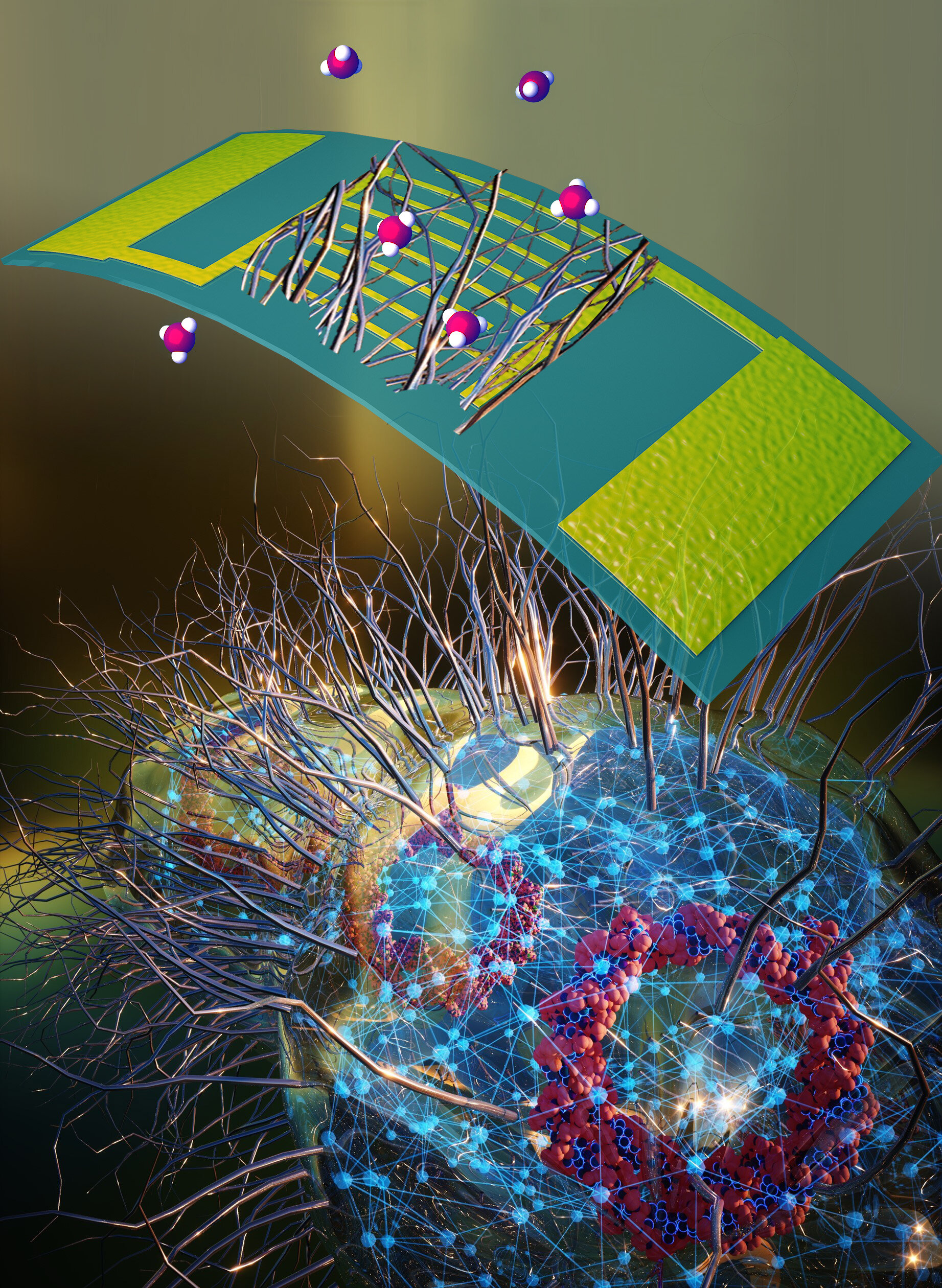Electronic nose built with sustainably sourced microbial nanowires could revolutionize health monitoring
Date: 22.2.2023
Scientists at the University of Massachusetts Amherst recently announced the invention of a nanowire, 10,000 times thinner than a human hair, which can be cheaply grown by common bacteria and can be tuned to "smell" a vast array of chemical tracers – including those given off by people afflicted with different medical conditions, such as asthma and kidney disease.
 Thousands of these specially tuned wires, each sniffing out a different chemical, can be layered onto tiny, wearable sensors, allowing health-care providers an unprecedented tool for monitoring potential health complications.
Thousands of these specially tuned wires, each sniffing out a different chemical, can be layered onto tiny, wearable sensors, allowing health-care providers an unprecedented tool for monitoring potential health complications.
Since these wires are grown by bacteria, they are organic, biodegradable and far greener than any inorganic nanowire. The team wondered if they could work with nature to sniff out disease – and it turns out they have done just that.
The answer begins with a bacterium known as Geobacter sulfurreducens, which Derek Lovley and Jun Yao previously used to create a biofilm capable of producing long-term, continuous electricity from your sweat. G. sulfurreducens has the surprising natural ability to grow tiny, electrically conductive nanowires.
But G. sulfurreducens is a finicky bacterium that needs specific conditions in which to grow, making it difficult to use at scale.
"What we've done," says Lovley, "is to take the nanowire gene – called pilin – out of G. sulfurreducens and splice it into the DNA of Escherichia coli, one of the most widespread bacteria in the world."
Image source: UMass Amherst.























